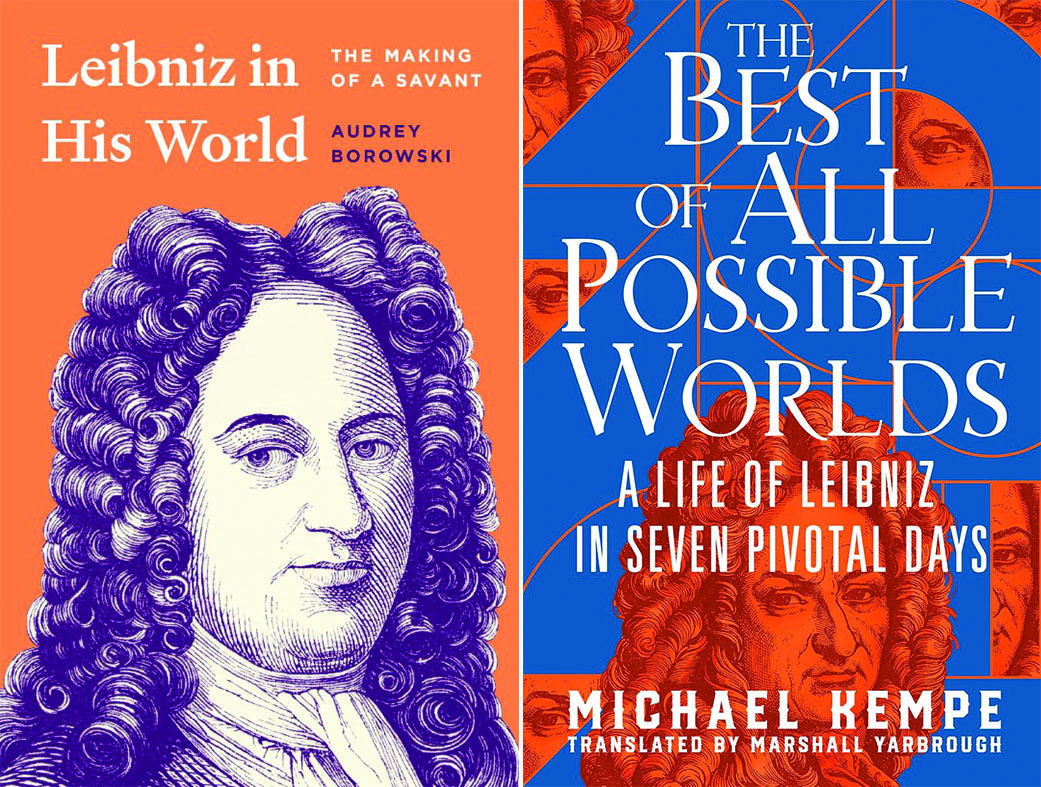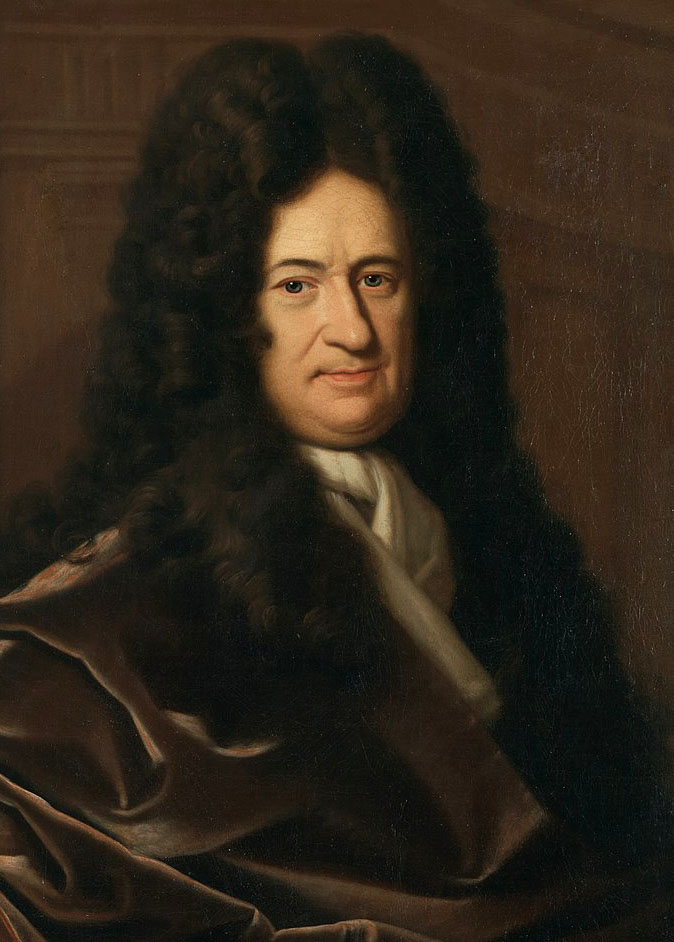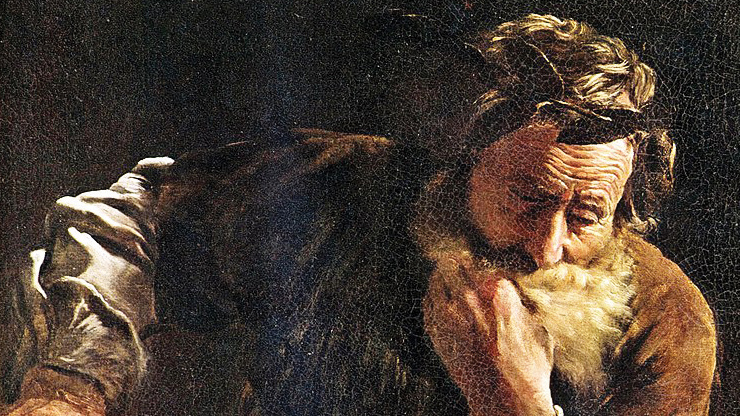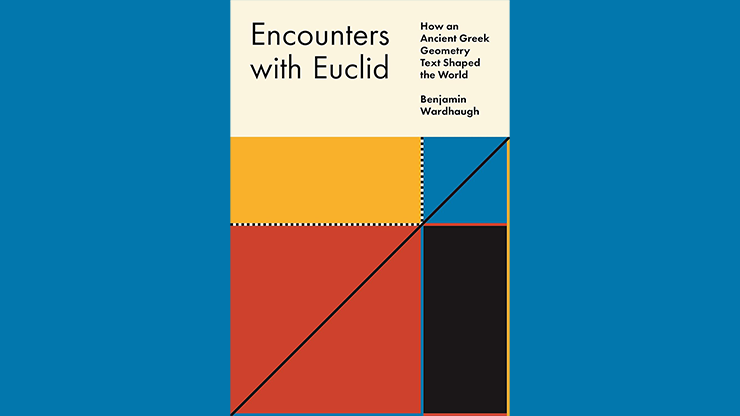Eight Years and Seven Days in the Life of Gottfried Wilhelm Leibniz
Leibniz in His World: The Making of a Savant. By Audrey Borowski. Princeton University Press, Princeton, NJ, November 2024. 320 pages, $35.00.
The Best of All Possible Worlds: A Life of Leibniz in Seven Pivotal Days. By Michael Kempe. Translated by Marshall Yarbrough. W.W. Norton & Company, New York, NY, November 2024. 304 pages, $32.50.

Gottfried Wilhelm Leibniz (1646-1716) was first and foremost a mathematician — one of the greatest of his era. Leibniz’s supreme contribution was his discovery, independently of Isaac Newton, of the fundamental theorem of calculus: that integration and differentiation are inverse operations. He invented the notation \(\int f(x) \, dx\), which still pervades mathematical writing more than 300 years later.
Leibniz made numerous other major contributions to mathematics as well; notably, he developed the matrix representation of linear equations, defined the determinant, and formulated versions of Gaussian elimination and Cramer’s rule. He also found the first infinite series for \(\pi\), \(\pi/4=1-1/3+1/5-1/7...\), though he was not the first person to do so.
What is truly amazing about Leibniz, however, is the number of different fields to which he contributed. He engaged in an impressively diverse collection of studies and appears in many intellectual histories of the late 17th and early 18th centuries. He was a major philosopher; Bertrand Russell’s first philosophical work, written almost two centuries after Leibniz’s death, was titled A Critical Exposition of the Philosophy of Leibniz [4]. My late colleague Martin Davis titled his book about the history of computer science The Universal Computer: The Road from Leibniz to Turing [1]. Chapter 1 of Davis’ text explores Leibniz’s contributions to formal logic, study of binary notation, creation of a mechanical arithmetic calculator, and dream of a “universal characteristic:” a well-defined language through which users can express all knowledge and mechanically carry out all reasoning.
Leibniz’s universal characteristic is likewise a subject of discussion in Umberto Eco’s The Search for the Perfect Language [2]. Paul Hazard’s classic history of the early Enlightenment period, The Crisis of the European Mind: 1680-1715 [3], recalls Leibniz’s unsuccessful attempts to persuade Catholic theologian Jacques-Bénigne Bossuet to join him in an effort to reconcile the Protestant and Catholic Churches. Leibniz also had a deep interest in biology—he was perhaps the only mathematician before the 20th century who was more fascinated by microscopes than telescopes—and contributed to the early study of evolution and the history of planet Earth. He conducted significant work in philology and linguistics, as well as historical and philosophical legal research.
And then there were Leibniz’s day jobs, so to speak. He was employed for 40 years at the House of Hanover, a prominent dynasty in Europe, where his chief official responsibility was to write a history of the family of Welf (or Guelph) from whom the Hanovers were descended. Leibniz carried out his historical studies with the same energy and scrupulous precision as his other pursuits, and though he never finished the work, his account was published in three volumes in the 19th century. As court librarian, he developed a cataloging system that was adopted widely across Europe.
Leibniz was also an inventor. In addition to the mechanical calculator, he designed wind-driven propellers, pumps, lamps, and even an early steam engine. Furthermore, Leibniz was involved in myriad practical entrepreneurship and political projects. He helped to establish the silk industry in Germany, which persisted somewhat successfully until the 1960s, and spent years attempting to rectify flooding in the silver mines of the Harz Mountains (to no avail).
While Leibniz published a few books and a substantial number of articles and short pieces in his lifetime, these writings were just the tip of a huge iceberg. Several additional texts that he more or less completed were published decades or even centuries after his death. He wrote roughly 900 letters a year—many of them short essays—to correspondents near and far. Most of all, he produced countless notes on scraps of paper with his thoughts about all sorts of topics. When he could, Leibniz liked to lie in bed for an hour in the morning, just thinking; it sometimes took him most of the day to record all that he had thought during that hour. A project to publish all of Leibniz’s writings began in 1901. This endeavor has persisted through two World Wars, multiple regime changes, partition, reunification, and advances in publication technology; when complete, the record will span approximately 170 volumes.

Two recent biographies of Leibniz handle this vast, unmanageable sprawl by limiting their temporal scope. In Leibniz in His World: The Making of a Savant, author Audrey Borowski focuses on the eight years from 1672 through 1679. Meanwhile, Michael Kempe’s The Best of All Possible Worlds: A Life of Leibniz in Seven Pivotal Days concentrates on a selection of important occasions in Leibniz’s lifetime.
Leibniz in His World is primarily intended for a scholarly audience, as it is a reworking of Borowski’s doctoral thesis. She mainly comments on Leibniz’s interactions with the other people in his sphere: scientists, philosophers, clerics, intellectuals, aristocrats, and projectors. In the 17th and 18th centuries, projectors were people who promoted and carried out some kind of project. These individuals ranged from serious scientists and ambitious entrepreneurs to impractical dreamers and snake oil salesmen — or often a combination of all. Though Leibniz distrusted projectors as a class, he frequently interacted with them and apparently found some to be exciting or fascinating.
Leibniz’s endeavors to promote the production and use of phosphorus involved dealings not only with its inventor—alchemist Hennig Brand—but also with inventor Johann Daniel Crafft; physician, alchemist, adventurer, and philosopher Johann Joachim Becher; scholar Jean Gallois; and Leibniz’s chief mentor, mathematician Christiaan Huygens. These negotiations were complex and not always aboveboard, and Borowski recounts that Leibniz once commissioned the theft of a cache of letters from Becher’s apartment. She also details a number of additional interesting episodes, such as Leibniz’s philosophical correspondence with Jansenist philosopher Antoine Arnauld; his attempts to convince the King of France to invade Egypt; his idea for a secret society of enlightened savants who would infiltrate the governments of the world and rule it wisely; his engagement with the Republic of Letters and efforts to create a learned academy; his unsuccessful enterprise to secure a permanent position in Paris; and his negotiations with his eventual employer, the House of Hanover.
Kempe’s book, The Best of All Possible Worlds, was published in German in 2022 and has now been translated into English by Marshall Yarbrough. It is written for a general readership and aims to convey a sense of some of Leibniz’s accomplishments and activities, ways of thinking, and day-to-day affairs. It even explores what it might have been like to be him, to the extent that is imaginable. The book is structured around seven specific days, mostly from Leibniz’s later life:
- October 29, 1675: Leibniz first pens the integral sign.
- February 11, 1686: Leibniz sends a philosophical manuscript to Arnauld.
- August 13, 1696: Leibniz begins writing a diary (which he abandoned a few months later).
- April 17, 1703: Leibniz receives a letter from Joachim Bouvet, a Jesuit missionary in China who claims that he used Leibniz’s writings on binary arithmetic to understand the I Ching (a Chinese divination text from the ninth century BCE).
- January 19, 1710: Leibniz engages in a long conversation with aristocratic brothers Zacharias and Johann von Uffenbach, who left a record of their impressions of the elderly savant.
- August 26, 1714: Two weeks after the death of Queen Anne of Great Britain, Leibniz’s boss, elector George of Hanover, is named King George I. Leibniz makes plans to leave Vienna—where he had taken a protracted visit—and return to Hanover in the hopes of accompanying the court to London (in the end, he was not allowed to go).
- July 2, 1716: Leibniz meets with Russian Tsar Peter I (known as Peter the Great), who was vacationing at Bad Pyrmont.
It is clear that Kempe carefully chose these days to illustrate the different sides of Leibniz’s life, philosophy, and work. He recounts each day in great detail: the many projects in which Leibniz was simultaneously engaged at the time (generally a dozen or more), his thoughts, his current location (as he was constantly on the move), the letters that were piled on his desk, the state of his immediate environs and of Europe at large, and even the weather. The necessary scholarship to pull off this feat is prodigious—indeed, Kempe is director of the Leibniz Research Center and the Leibniz-Archive in Hannover—but on the whole, the book wears its learning lightly.
Occasionally, Kempe does seemingly assume that readers are already thoroughly familiar with Leibniz’s life. For instance, the text includes a reproduction of a charming 1795 engraving by artist Johann David Schubert that depicts 15-year-old Leibniz sitting under a tree, captioned “Leibniz Chooses Between the Old and New Philosophy.” Kempe indicates that this image is based on a story that Leibniz often told about himself, but there is no endnote and I cannot figure out where Leibniz told the story or how Schubert might have learned about it. Additionally, the book is written in the historical present—presumably to make the account more vivid—though I do not think this style actually adds much.
I find it impossible to wrap my mind around the entirety of Leibniz’s life and works, as his accomplishments are too multifarious and his world is too remote. I am therefore grateful to Borowski and Kempe for their vivid portraits of some of the most important aspects of an amazing man and his almost unbelievable career.
References
[1] Davis, M. (2000). The universal computer: The road from Leibniz to Turing. New York, NY: W.W. Norton & Company.
[2] Eco, U. (1995). The search for the perfect language. Cambridge, MA: Blackwell Publishers.
[3] Hazard, P. (1953). The European mind: The critical years (1680-1715). New Haven, CT: Yale University Press.
[4] Russell, B. (1900). A critical exposition of the philosophy of Leibniz. Cambridge, U.K.: Cambridge University Press.
About the Author
Ernest Davis
Professor, New York University
Ernest Davis is a professor of computer science at New York University's Courant Institute of Mathematical Sciences.
Related Reading



Stay Up-to-Date with Email Alerts
Sign up for our monthly newsletter and emails about other topics of your choosing.



